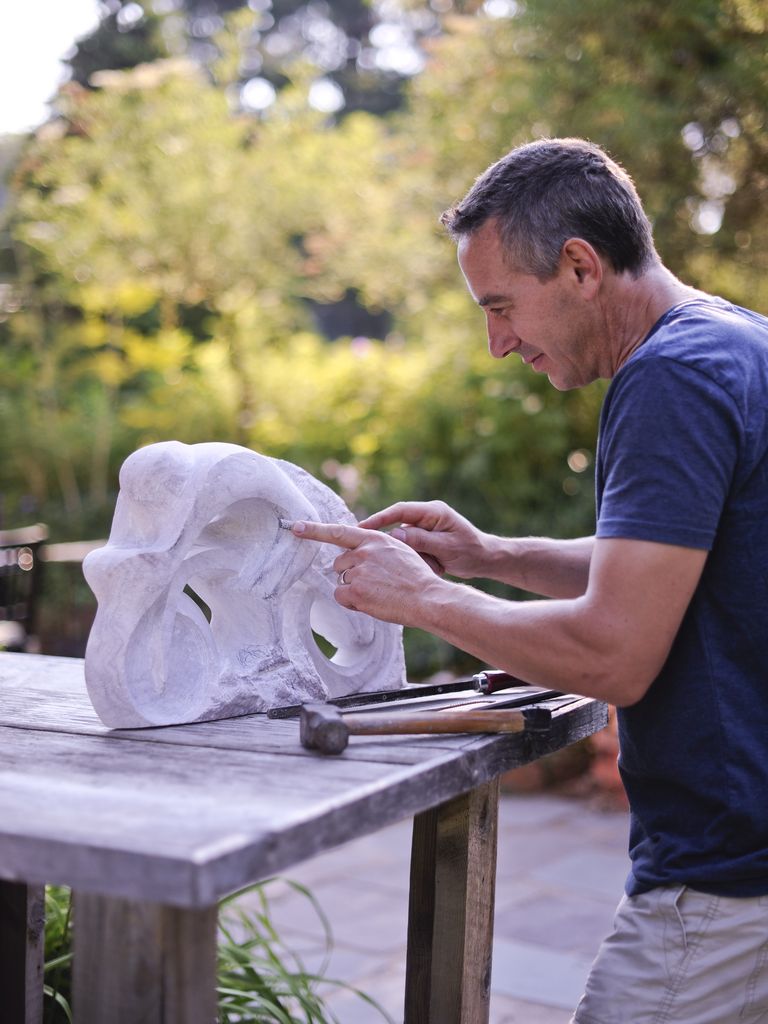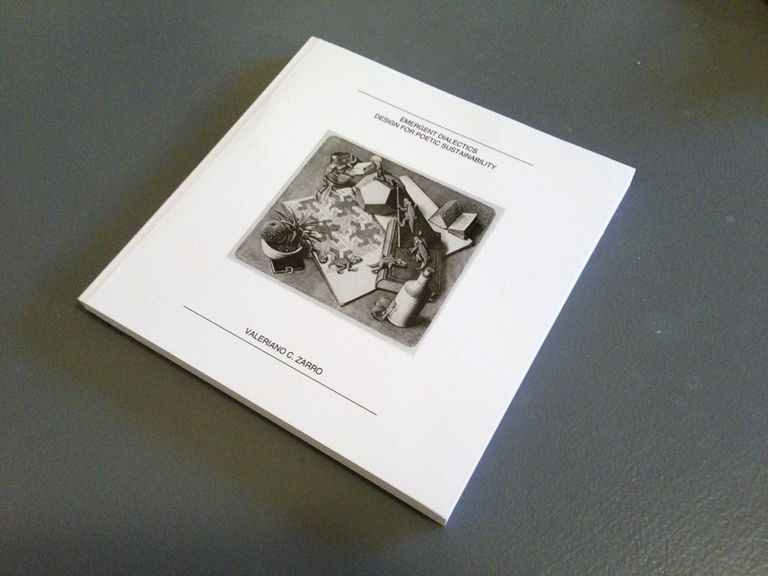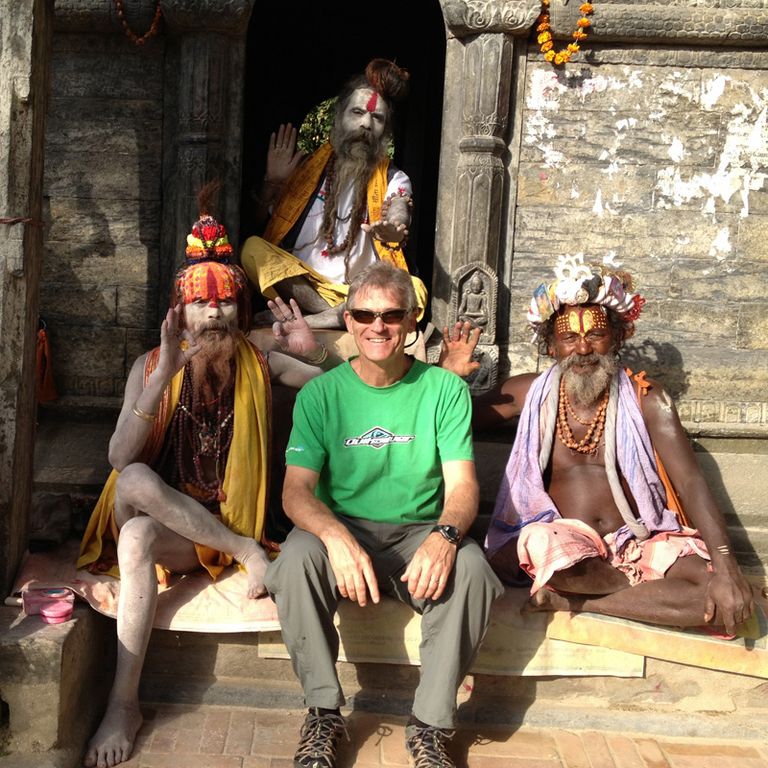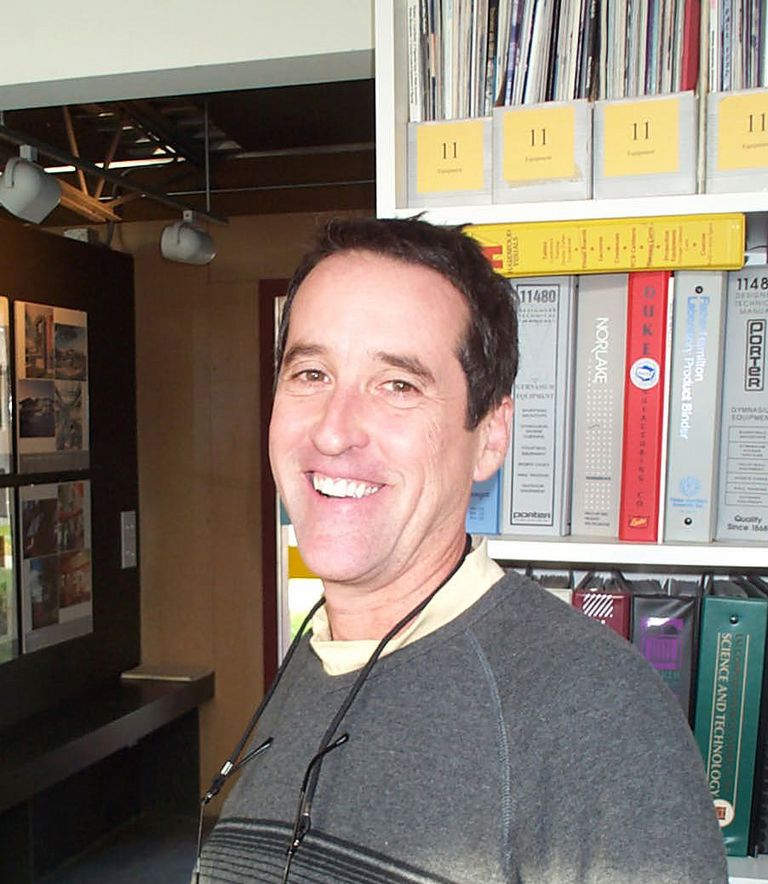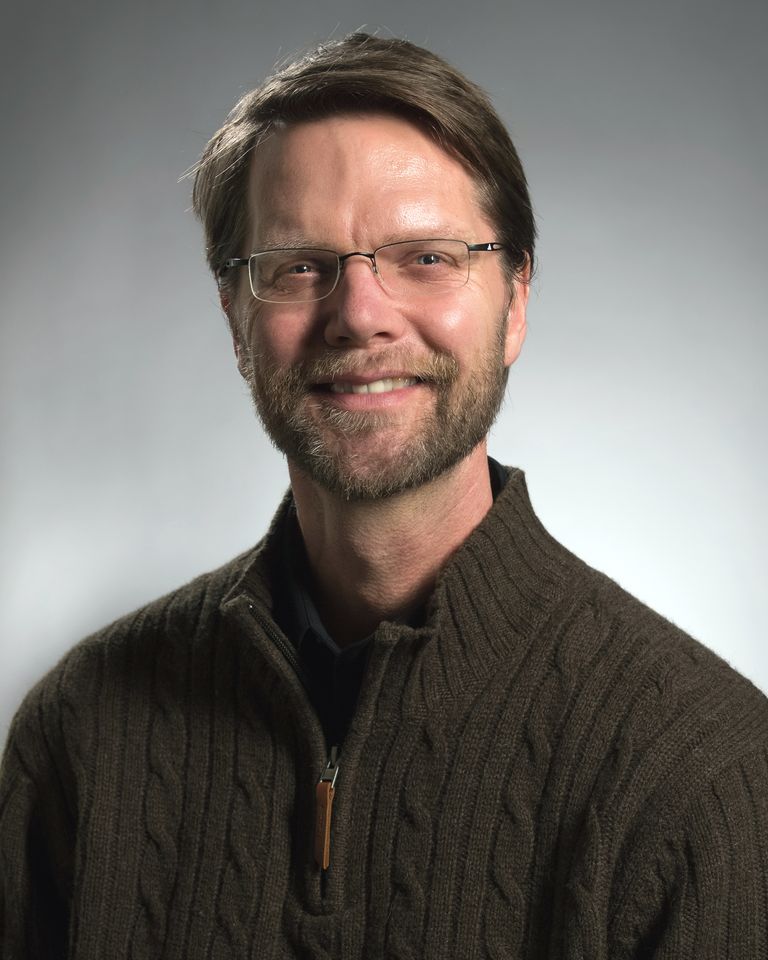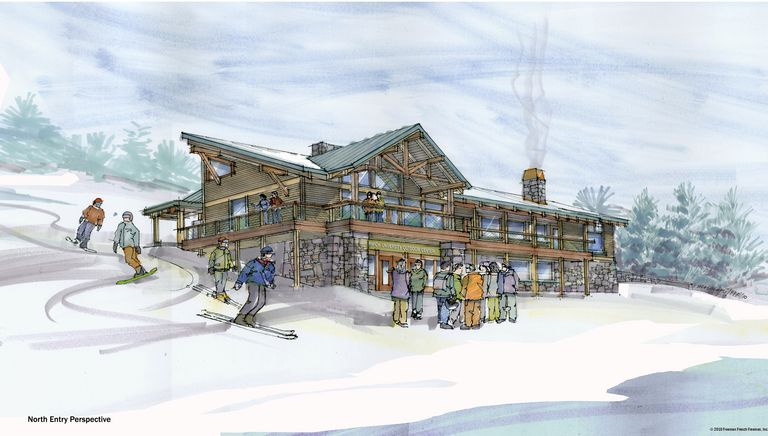6.13 AIAVT News
Panel Discussion Probes the Role of Today’s Architect
Architects, building professionals, architecture students and members of the public gathered together on the evening of April 3 at Middlebury College to hear a panel discussion titled “Now More Than Ever! More...
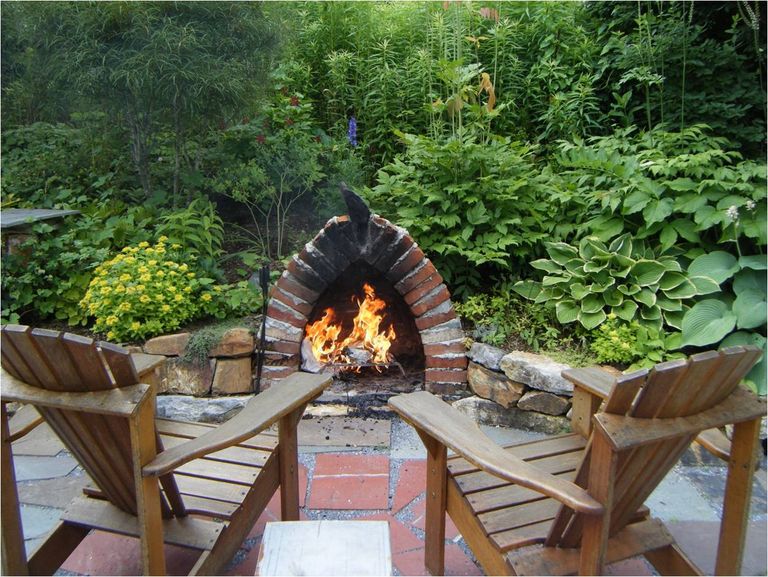
Work of Alan Benoit, AIA, Showcased in National Gardening Magazine
The flagstone patio and tidy cottage gardens of the Manchester, Vermont Benoit family property often glow in the orange light of the outdoor fireplace, but this spring the modest gardens basked in the limelight of a national magazine. More...
BOOK REVIEW
Brain Food for Inspiring Architectural Solutions
'Emergent Dialectics Design for Poetic Sustainability' By Valeriano C. Zarro Reviewed by Joseph Cincotta, AIA More...
How I Was Inspired to Lead Fundraising Efforts for Projects to Help Nepalese Women
As a long-time outdoor and mountaineering enthusiast, early in 2012, I decided to take a trekking vacation in Nepal. More...
AIAVT Comments on 2012 Vermont Access Rules
In the March issue of AIAVT News, Bob Duncan, AIA, of Duncan Wiesnewski Architecture and a member of AIAVT's Public Policy Committee, reported on problematic elevator requirements found in Vermont's 2012 Access rules. More...
Panel Discussion Probes the Role of Today’s Architect
Architects, building professionals, architecture students and members of the public gathered together on the evening of April 3 at Middlebury College to hear a panel discussion titled “Now More Than Ever! Why the Architect's Role Is More Essential than it Has Ever Been.” The program was presented by AIA Vermont in collaboration with two groups at Middlebury College: the Department of History of Art + Architecture and the Office of the Director of the Arts. Engineering Ventures and Hubbarton Forge provided support for the event.
Read what Seven Days reporter Kevin Kelly had to say about the discussion.
Listen to, or download an audio recording of the program:
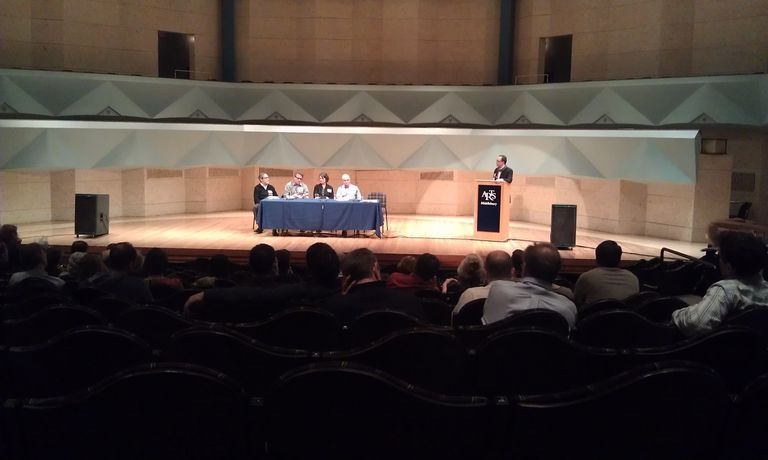
Work of Alan Benoit, AIA, Showcased in National Gardening Magazine
By Laura Yanne
The flagstone patio and tidy cottage gardens of the Manchester, Vermont Benoit family property often glow in the orange light of the outdoor fireplace, but this spring the modest gardens basked in the limelight of a national magazine.
The venerable bimonthly Organic Gardening has been around for 70 years and boasts a readership of 270,000. In the April/May issue, the property of Alan and Nancy Benoit was featured in a lavish eight-page spread, replete with opulent photographs, titled “Sticks and Stones: Salvaged materials find a new home in a charming Vermont garden.”
Alan specializes in small, affordable, energy-efficient building design and natural landscaping; he is also a horticulturist, sculptor, naturalist and photographer. Using passive solar design and recycled materials, the couple also built the studio that houses his wife’s shoemaking business. To read the Organic Gardening article, visit Alan’s website: www.SustainableDesignOfVT.com.
By Joseph Cincotta, AIA
If, according to Socrates: “The unexamined life is not worth living,” then the unreflective architect is doomed to boredom.
This is a theory book—to be precise, an architectural theory book. Remember theory class in school? Who among us would want to repeat what was for many an obstacle on the way to getting an accredited degree? Architects are often accused of over thinking as it is, so why would we encourage the stereotype and delve into a new theory book? So when AIAVT Executive Director Carol Miklos asked me to read and critique this book, my first thought was, “What did I do to deserve this?”
In the spirit of full disclosure, I’ll admit that my undergraduate degree at Binghamton U. was in “Architecture History and Theory;” however, I always had the feeling that the experience was a bit like wearing “The Emperor’s New Clothes.” I played the game well enough to get in to the Harvard GSD, but theory was not my passion. Yet, Zarro’s path to writing the book got to my curiosity. AIAVT member Val Zarro began his inquiry in Stockholm, with his doctoral thesis, Towards Achieving a Sense of Place, but the book represents an evolution of thought derived from his many years of practice, most recently in Pittsburgh. So—when a practicing architect returns to theory—he has my attention.
Zarro’s backstory motivated me to overlook some flaws in an otherwise polished effort. The book is decidedly dense. It is also at once compelling, yet conversely resistant to a clear understanding. On every left-hand page is an image; on every right-hand page is text. This turns out to be the one consistent structure in a seemingly unstructured work—and it's not an accident. Zarro tells us that both images and text are far-ranging and intentionally unrelated. The words read like an unedited mosaic—including many things of interest—yet the author is seemingly uninterested in being bound to literary convention’s linear progression of ideas. In one sentence, we read about the poetics of space, and in another about the failure of Western economy. On the same spread, images of Escher and Picasso seem randomly placed.
Zarro’s title is appropriate: in many ways the book reads like poetry. The full intent of its purpose comes only after letting go of accepted norms of literary syntax. After sharing these points with a scholarly friend, my first reaction was to write the book off and encourage the author to find another editor. However, my architect's sense of abiding “response-ability” took over and I gave it a second try. I tried to take the book by force of will and learned the hard way that the book resists force well.
The author intentionally structured his book to engender a poetic reflection of image and text. It is a risky mix and, like cocktails, some mixes work better than others. The good news is some are wonderfully intoxicating. By combining seemingly unrelated images and text, the author has, in effect, recreated moments in our own lives where we experience a daily collision of random events that can be completely overwhelming. Dialectics can be frustrating! Yet, it is exactly in those moments of seeming desperation that our human genius finds solutions that ultimately move us forward. So too, Emergent Dialectics challenges and provokes us outside of our comfort zones.
By day five of immersing myself in the book, I found myself in increasingly more reflective moods. I was existentially observing my own dialectic of daily activities, the give and take. It was a healthy remove that left me feeling incredibly fecund. At one point, I stumbled upon a picture of Jean-Baptiste Lamarck. An odd reference in an architecture book, which I recall only because the late great Harvard professor, Stephen Jay Gould, argued that Lamarck's earlier understanding of species development paved the way for Charles Darwin's brilliant theory of Natural Selection. Whereas Lamarck saw changes happening in a gradual and intentional process over time, Darwin hypothesized a mechanism in which random and rapid mutations are selected naturally when they provide advantage to a species.
As someone who had, at this point in my reading of the book, just come out of a particularly inspirational museum exhibit, I suddenly realized that the distinction between Lamarck and Darwin correlates to the wondrous, nonlinear, sometimes painful process of design. The concomitant dialectic that Zarro emphasizes progresses from missteps to a cohesive act.
Once again, this is no accident. Zarro has spent a long time refining his theory of architecture and I believe his book offers us the opportunity of a “more examined” architectural experience. His “poetics” are rich and far more than “sustainable.” I’ve come to believe that it may be worthwhile for architects and acolytes to “drink in” a few pages of Emergent Dialectics Design for Poetic Sustainability once or twice a month as a type of “brain food” for creativity, as perhaps the most sustainable endeavor one can experience.
Emergent Dialectics is not a typical book. Expect to be lost, then found and lost again. But I fervently believe that is a good thing; moreover, the experience emulates life in general and the design process, in particular. Author Anais Nin once famously noted, “In chaos, there is fertility." Zarro has given us a very fertile chaos. He reminds us that architectural theory can be a kind of “gateway drug” to experiences of which we can never get enough. At the very least, the book offers a fuller consideration of architecture in its many wondrous facets. At most, the heightened consideration the book encourages will, in the poetic words of Grace Slick, "Feed your head."
NOTES______________________________________________________________________________
1) For further good reading about architectural theory, see (disclaimer: this is a live link and may contain comments that are unintended): http://archinect.com/forum/thread/50789135/why-is-architectural-t3heory-so-hard-to-read
2) I suspect that the pages in Zarro’s book that stimulate each of us might differ according to our make-up. I found the experience of reading the book with a friend to be rewarding, offering insights that I would have otherwise missed. Given the rich opportunities for fertile conversation presented by this book, a Facebook group devoted solely to it has been created at: https://www.facebook.com/groups/661917113825860/.
I hope the Facebook discussion creates an even richer consideration of the book.
More About Valeriano Zarro
Before moving to Burlington, Val Zarro practiced architecture in New York City—focusing his work primarily on loft conversions. In 1995, he opened Zarro Design Workshop in Pittsburgh’s Historical South Side where he focused solely on the “three R’s”—restoration, renovation and rehabilitation—of existing urban structures in order to maintain and revitalize our cultural heritage. Val may be reached at val@vczarro.com. His book is available for purchase at Amazon.com for $39 (search on his name or the book title).
How I Was Inspired to Lead Fundraising Efforts for Projects to Help Nepalese Women
by Sparky Millikin
As a long-time outdoor and mountaineering enthusiast, early in 2012, I decided to take a trekking vacation in Nepal. After first arriving in Kathmandu, the group I was traveling with took a short flight to Lukla. At one point, we had been hiking for eight hours a day for seven consecutive days, staying overnight in both tea houses and in the homes of local Nepalese families along the way. On the eighth day, we reached a plateau, where we were unexpectedly greeted by a crowd of smiling school children. As we entered their school courtyard, it dawned on me that the students had gathered to not only welcome us, but to show their appreciation for my fellow travelers' support of their village.
By the time my trekking companions and our guides reached the tables set out for us in the courtyard, our necks were festooned with dozens of marigold leis and khatas (scarves). While enjoying hot tea and cookies, we watched the fanfare before us: the students danced and sang, and school leaders gave speeches in Nepalese mixed with some English.
Nepal is one of the poorest countries in the world, ranking in the bottom ten percent. More than half the people live on less than $2 a day. As is true in much of the developing world, women and girls are especially disadvantaged. Among the trekkers in my group were individuals associated with Edge of Seven, a Denver-based non-profit focused on building infrastructure projects to empower, provide educational opportunities, and break the cycle of poverty among women in third-world countries. Collaborating with grassroots organizations such as The Small World, at the time of our trip Edge of Seven had constructed three schools, a girls' hostel, and two community water projects in just three years.
Back home in Burlington, my career as managing principal of TruexCullins Architecture + Interior Design was coming to a close. After my trip to Nepal, I felt that somehow I wanted to make a difference in the lives of those less fortunate. I thought I could do so by leveraging the energy around my retirement to raise money for future Edge of Seven projects.
In May 2013, TruexCullins held a reception to recognize my career with the firm, but more importantly, to invite the architectural and larger Vermont community to join the firm in supporting the work of Edge of Seven. We were amazed by the response. Individuals and businesses around the state stepped up and together we met my goal of raising $20,000 for new school and community projects in Nepal.
As some of you may know, TruexCullins works on K-12 school design and planning projects in over a dozen countries, including Belgium, Bulgaria, Russia, and Brazil. But now, thanks to the fundraising drive last year, firm staff find themselves in Nepal, where they are helping Edge of Seven and its collaborating organization, The Mountain Fund, with “Her Farm,” a community center being constructed within the Mankhu Village Farm for displaced and abused women. The project is being headed by Diantha Korzun, past-president of AIAVT, and includes classrooms, a health and wellness area, a daycare center, and living quarters.
The community center structures are being built using “earthbag construction,” an innovative technique that employs polypropylene rice bags filled with dirt as primary building blocks. The bags are laid in courses, like bricks, and the walls are covered with wire mesh and then plaster. This building method is environmentally friendly and can be replicated throughout Nepal's Everest Region using materials readily available to the local people. Building with earthbags takes a fraction of the time that it takes to build out of chiseled granite blocks and can be accomplished with unskilled labor. The resulting structures are earthquake-resistant (a big concern in Nepal) since earthbags are more forgiving than solid granite.
At the TruexCullins celebration in May, guests helped us build an earthbag wall of our own—right in the office—using polypropylene bags just like those we are using in Nepal. As the stack of bags became higher, the rising wall came to symbolize to me our collective efforts to lift Nepalese girls and women out of poverty and provide them with new opportunities. Our in-office wall also became a fun way to educate people about the earthbag construction technique.
This coming October, through Edge of Seven, I will return to Nepal with others from TruexCullins; we hope some of our fellow Vermonters will join us. Edge of Seven will lead a 21-day fund raising trek to Mt. Everest Base Camp, Kala Pattar, and over the Kongma La Pass to climb Island Peak (Imja Tse) at 20,300’. Trekkers interested in taking a more cultural route through the small villages of the Lower Solo Khumbu may extend their stay and view Edge of Seven’s projects in the villages of Phuleli, Basa, and Salleri.
Over my long career in architecture and construction I have attended many high-profile ribbon-cuttings and groundbreakings with owners and dignitaries wielding silver shovels. But none of them moved me as did that experience of sitting in 90 degree sun in a Nepalese courtyard, 17 marigold leis around my neck, while rows of schoolchildren sang and danced in appreciation of their new school. Bringing joy and opportunity to those in need is why our Vermont group has embarked on the campaign to build more schools in Nepal.
For more information and to sign up for the Edge of Seven Everest Base Camp trek, visit edgeofseven.org/Adventure.html
GRASSROOTS:
AIAVT on Capitol Hill: Advocating for Change to Benefit Architects
As always, part of AIA Grassroots Conference activities include Chapter members paying visits to their congressional representation in Washington. On March 21, President Tom Bachman, AIA; President-elect Maura O’Dea Wygmans, AIA; and Executive Director Carol Miklos walked up to Capitol Hill to meet with Vermont's delegation, where they advocated for change regarding four specific issues as outlined by AIA National. They spoke for close to an hour with senior staffers at the offices of Senators Patrick Leahy and Bernard Sanders and Representative Welch. They were fortunate to speak briefly with both Sanders and Welch themselves.
The issues discussed were pertinent to small firms such as architecture firms here in Vermont:
1. Small Business Tax Reform: AIA supports comprehensive, equitable, tax reform for businesses, both large and small, and opposes corporate-only reform.
AIAVT urged legislators to encourage Congress to support small businesses such as most of those in Vermont as it debates tax reform. AIAVT explained that 80% of all architecture firms are organized as pass-throughs (sole proprietors, S corporations, or partnerships) that pay taxes at individual, not corporate rates.
AIAVT said that passing corporate-only tax reform (i.e., lowering corporate-only tax rates but not individual rates) will hurt small businesses in every industry, including architecture firms, because important incentives that pass-throughs rely on could be wiped away. AIAVT said that small businesses in Vermont need a simpler tax code that helps firms grow without punitive tax increases.
2. Energy Retrofits: AIA supports efforts to extend and make modest improvements to the Energy-Efficient Commercial Building Tax Deduction.
AIAVT shared research that indicates that commercial buildings account for more than 70% of electricity consumption in the U.S. The Energy Efficient Commercial Building Tax Deduction provides building owners a deduction of up to $1.80/sf for energy efficiency improvements and also helps state and local governments finance energy efficiency improvements that reduce energy costs to taxpayers. AIAVT made certain that its congressmen were aware that this deduction has been a useful financing tool in numerous Vermont construction projects and that architects hoped Congress would not allow it to expire at the end of this year. AIAVT also asked them to consider raising the deduction to further encourage energy savings.
3. Student Debt Relief: AIA supports legislation allowing architecture students to contribute their design abilities to communities in exchange for student debt relief.
AIAVT pointed out that federal programs help medical, legal and veterinary students work pro bono in under-served areas in exchange for loan forgiveness—but not architects. A recent survey showed that graduating architecture students carry much higher undergraduate student debt than graduates in many other professions. If these graduates cannot find work, they may leave the profession, making it more difficult for construction work to ever return to previous levels. AIAVT encouraged Vermont legislators to support the draft legislation of AIA National to make student debt relief for architects a reality.
4. Small Business Procurement: The AIA supports common sense reforms to procurement for government projects that will help small firms enter the marketplace.
Sharp cuts to federal design and construction budgets mean more competition for fewer jobs—and the cost of competing for small firms is rising. AIAVT said that it is more important than ever that procurement laws ensure that small businesses have fair access to the federal marketplace. Ninety-five percent of AIA member firms employ 50 or fewer people and many of those firms are sole practitioners. As a result, many firms are not taking part, depriving the government of good talent. The message that was relayed was that AIA supports a fairer federal construction process that will help ensure smaller firms have a chance to compete.
For more about Grassroots, see the “President's Letter” in this issue of the newsletter.
AIAVT Comments on 2012 Vermont Access Rules
In the March issue of AIAVT News, Bob Duncan, AIA, of Duncan Wiesnewski Architecture and a member of AIAVT's Public Policy Committee, reported on problematic elevator requirements found in Vermont's 2012 Access rules. These latest rules, published late last year, require elevators in buildings of as few as 1,000 SF.
In the hopes of remedying this requirement, the AIAVT Board of Directors sent a letter to Bob Patterson, Deputy Director, Vermont Department of Public Safety, Division of Fire Safety, outlining our position on the 2012 Access Rules. The text of the letter is shown below:
Calendar
7/25 Biomass Plant and Solar Decathlon Houses Tour, Middlebury College and Norwich University. For more information contact info@ aiavt.org
9/25 5th Annual Guy W. Teschmacher Memorial Golf Tournament, Country Club of Vermont, Waterbury VT
10/2 AIAVT/NH Meeting/Tour, Dartmouth College, Hanover, NH. More information to follow
from the PRESIDENT
AIA Unveils Repositioning Initiative at Grassroots Conference
By Tom Bachman, AIA
Each year, AIA National holds its Grassroots Leadership and Legislative Conference in Washington, DC. This year, the conference took place on March 20-23 and the theme was “Leading through Change.” Our 2013 AIAVT contingent consisted of President-elect Maura O’Dea Wygmans, AIA; Executive Director Carol Miklos; and me.
Much of the conference focus was on AIA’s “Repositioning Initiative” and the architect’s role as a leader in transforming our organization into one that is better valued by members and the public. Last year, AIA National hired strategic marketing and advertising firm LaPlaca Cohen and design firm Pentagram to take a fresh look at the state of our profession, the Institute, and its operation. In a key session of the conference, the strategists—in a brutally honest manner—presented their findings, which came from research conducted among 31,000 members and nonmembers.
In summary, LaPlaca Cohen and Pentagram said that the nature and practice of architecture is changing and AIA must change with it to remain the leading professional organization in the field. In communications, they suggested a shift away from what AIA does and towards why it does what it does and why that matters. The firms also presented a new positioning statement: AIA is a visionary member organization providing advocacy, leadership, and resources for architects building a better world.
A major finding of the study that I suspect some of us here in Vermont can relate to is that there appears to be a real sense of detachment between AIA National and its state and local chapters. Thus, some of the most important goals that came out of the research were making members feel better connected to national and that their dues provide good value.
LaPlaca Cohen and Pentagram also raised significant issues regarding how we architects present ourselves and our profession to the public. They urged us be conscious of keeping our communications with the public and our clients readily understandable. By coincidence, this point meshed nicely with my choice of theme for AIAVT this year, “The Relevance of Architecture.” I know that many of you are working to make a difference in your community or more broadly by lending your expertise to various challenges, including the effects of Irene, intrusions from superstores upon our small town infrastructures, and maintaining Smart Growth—and I commend you for it. For those of you who have not yet engaged in this way, I urge you make yourselves more accessible: work with your communities about how to empower people to demand better design—not only in architecture—but in all aspects of the built environment.
We must find ways to demonstrate to the public that many architectural interventions can represent good value for the money and improve users’ experience or quality of life. Working together towards transforming the public’s perception of the architect as an artist who works only for the wealthy to a community contributor whose professional expertise is essential to public projects is critical to our future.
If you’ve not yet looked at the LaPlaca Cohen and Pentagram session video that I alerted you to previously, consider viewing it here: http://www.youtube.com/watch?v=x22D0po1h5Y. Summaries of the field interviews can be found here.
This is an exciting time within AIA, one with a real promise of change. The future of AIA will be defined by its members and the public. Join me this year in getting the word out: good design raises the quality of life for everyone—and architects are the vital ingredient to good design.
Best Regards,
Tom Bachman, AIA
Tom Bachman, President, AIAVT
NEW MEMBERS
Originally from Rochester, New York, Kevin Trout is a licensed architect practicing in Essex Junction with Scott + Partners Architecture. His experiences include commercial architecture and historic preservation. Educated at the University at Buffalo, he pursues well developed construction details, and likes to talk about our pattern-based and subconscious understanding of architecture. His wife is from Underhill and the couple has a one-year-old daughter.
latest ACHIEVEMENTS
MEMBERS
Long-time employee and senior architect Joel Page, AIA, has become a partner in the firm of Scott + Partners, Inc. Page specializes in multi-family housing, commercial and healthcare architecture, and high-tech, energy efficient building envelopes. His recently completed projects for the firm include the East Montpelier-Calais Emergency Services Building; a dermatology clinic expansion at Fletcher-Allen Healthcare; and an apartment complex on North Avenue in Burlington that recently won Efficiency Vermont’s “Best of the Best” in the Commercial Building Design + Construction category.
Tom Bodell, AIA, Maclay Architects, recently earned his CSI construction documents technologist (CDT) certification after taking a ten-week study and preparation course led by Brian Leet, AIA, Freeman French Freeman, Inc. Bodell joins 20+ other active CSI members that possess CDT and higher certifications.
In April, Frank Guillot, FAIA, GVV Architects, chaired the National Architectural Accreditation Board’s Visiting Team assigned to visit the Academy of Arts University in San Francisco, California to evaluate the institution’s Master of Architecture Program, both onsite and online, for continuing accreditation.
CSI recently awarded Jonathan M. Miller, FCSI, CCS, CCCA, SCIP, AIA, NCARB, the President's Plaque for his exemplary leadership as Chair of CSI's Certification Committee including: coordination of study guide alignment with CSI's Practice Guides, Body of Knowledge Analysis, and Item Bank development for the organization’s certification programs. The President's Plaque is given by the outgoing CSI President to the top five member-leaders who most contributed to furthering the President's and CSI's goals over the previous fiscal year.
Robert Swinburne, AIA, NCARB, LEED AP, recently completed Passive House Academy’s Passive House training and passed the international exam. He is now a certified Passive House Designer.
Chester architect Claudio Veliz, AIA, gave a talk at the Hinesburg Town Hall on May 1. Titled “Hinesburg: Valuing New England Village Architecture,” the talk explored what it is about these communities of “quaint” New England structures, streets, neighborhoods, and layouts that draws us to them. Using numerous illustrations and images, Veliz discussed the architectural aspects that give communities such as Hinesburg their value, strength, and staying power. Veliz was invited to speak at the suggestion of attorney Jim Dumont, who came to know him through the arguments Veliz had presented regarding the Dollar General proposed for the town of Chester. Read more about Veliz’ talk and work at: http://thecitizenvt.com/?p=16628#print
Banwell Architects and Trumbull-Nelson Construction Company were recently honored by the 2012 Building New Hampshire Awards Program; together, the firms received the “Community and Cultural Award” for their work to build the new Lebanon Middle School. The awards program recognizes work to build, remodel, or retrofit energy-efficient, high-performance residences and commercial buildings; all award-winning projects were designed and built to minimize their carbon footprint and impact on the environment. Energy Star-, LEED-, ReGreen-, and National Green Building Standard-certified were considered equally.
Three projects by Freeman French Freeman were recognized for design excellence at the Vermont Public Space Awards in Montpelier. One project was a 13,500 square-foot public garden atop Burlington International Airport’s parking garage; it was completed in partnership with Michael Lawrence Associates, a landscape architecture practice in Essex Junction. A landscape plan for James Jeffords Hall, a building on the University of Vermont campus, and a proposed outdoor recreation center at Norwich University in Northfield (above) were also recognized. Both were designed in partnership with landscape architects at SE Group of Burlington. The Vermont Public Space Awards are given in recognition of Vermonters’ efforts to create public spaces that have been enriched by design or planning.
AFFIFIATE News
NEW MEMBERS
Phelps Engineering, Inc. Phelps Engineering, Inc. has been providing quality consulting engineering services since 1976. Located in Middlebury, Vermont, the firm specializes in civil engineering, sanitary, and environmental services for a variety of clients. Phelps’ consultants work with communities, municipalities, businesses, schools, and residents to customize solutions for a wide range of engineering needs. Contact: Brandon Streicher, 802 388 7829, bstreicher@ phelpseng.com
Trudell Consulting Engineers (TCE) has been providing professional consulting services since 1975. TCE offers expertise in civil engineering, site design, land surveying, landscape architecture, planning, environmental services, and permitting. The TCE team enjoys working on a wide variety of projects with a range of clients throughout Vermont. Contact: Jeremy Matosky, 802 879 6331 x102, Jeremy.Matosky@ tcevt.com
AIAVT News is published by AIA Vermont, a Chapter of the American Institute of Architects.
Opinions are the author’s and not necessarily the views of AIAVT or any other organization.
AIAVT reserves the right to edit articles for available space and determine appropriate content prior to inclusion. Submissions must be received by the 15th of the month prior to publication.
For advertising rate and specifications, see our Media Kit.
Please send articles, notices, letters, and graphic submissions to the editor:
Carol Miklos, Executive Director, AIA Vermont
88 Blackbird Lane
Charlotte, Vermont 05445
802-425-6162



